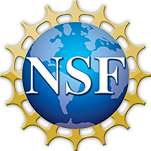NCBI accession number
| URL | https://www.bco-dmo.org/dataset/717352 |
|---|---|
| Download URL | https://www.bco-dmo.org/dataset/717352/data/download |
| Media Type | text/tab-separated-values |
| Created | October 19, 2017 |
| Modified | June 12, 2019 |
| State | Final no updates expected |
| Brief Description | Lake surface sediment and submarine canyon sediment bacterial V1-V3 iTag sequence libraries. |
Acquisition Description
Submarine Canyon Sediment Bacteria:
A ~35cm multicore was collected from La Jolla submarine canyon and sectioned using pre-sterilized tools shipboard at 1cm intervals for preservation at -80 deg C. DNA was extracted from ~2g subsamples using the MoBio PowerSoil DNA kit with an additional heating step applied during lysis. Sequence libraries were assembled for select bulk sediment samples for the v1–v3 region of the 16S rRNA gene using Eubacteria-specific primers (Muyzer et al. 1993) on the Illumina MiSeq platform (Bartram et al. 2011) at the University of Minnesota Genomics Center (UMGC).
Lake Surface Sediment Bacteria (excerpt from Harrison et al., 2016):
A 1.5 m hollow steel wedge was filled with a mixture of dry ice pellets and isopropyl alcohol and then lowered into the sediment. The coring device was held in place for 15 min and then raised back to the surface, where the dry ice slurry was poured off and unfrozen mud scraped off the sides. The device was then filled with lake surface water, and the frozen core slabs levered off the sides. The recovered frozen cores were wrapped in aluminum foil and placed on dry ice for transport. In the laboratory, the cores were placed on cardboard and kept frozen by regular contact with dry ice pellets. The sampling plane (facing away from the coring device) was smoothed down using a hand-held electric wood planer and utility knives until undisturbed laminae were clearly resolved. Core sections were selected by visual inspection on the basis of lamina thickness and continuity across the sampling plane.
Laminae were excised with pre-sterilized utility knife blades from the top 9 cm of the Twin Lake freeze core: five corresponding to white layers deposited during spring/summer blooms and four corresponding to winter deposition of organic matter and terrigenous particles. 0.2 g of material was collected from the sampling plane as described above, beginning at the lamina base and removing material no greater than 1 mm above that level.
From the Lake McCarrons freeze core, five spring/summer laminae were collected from sub-sampled portions of the 16–24 cm depth range by sequentially exposing the z-plane surface of the horizon with sterilized utility knife blades.”
Additional 5 mm frozen sediment wedges cross-cutting sediment laminae were taken at 2 cm intervals between 0 cm and 30 cm depth and 5 cm intervals from 30 cm to 65 cm, using pre-sterilized instruments. Subsamples were stored at -80 deg C for later extraction. An additional ambient-temperature piston core was collected from Lake McCarrons sediment at a position roughly adjacent (within 5 m) to the freeze core site and subsampled on shore within 2 h after removal. The presence and vertical migration of gas bubbles was observed in core sediment. 2 cc sediment aliquots were collected at 10 cm depth intervals starting at 2 cm beneath the sediment-water interface through predrilled windows, excluding the exterior 1 cm of material in contact with the coring tube. Subsamples were stored at -80 deg C.
DNA extraction, amplification and sequencing
Depth intervals corresponding to ambient core subsamples and excised laminae were used to select among the high-frequency bulk sediment samples of the McCarrons core. DNA was extracted from all sediment subsamples with a MoBio Soil DNA kit with an additional heating step added to the lysing step of manufacturer protocols (Harrison and Orphan 2012).
Sequence libraries were assembled for select bulk sediment samples for the v1–v3 region of the 16S rRNA gene using Eubacteria-specific primers (Muyzer et al. 1993) on the Illumina MiSeq platform (Bartram et al. 2011).
Processing Description
BCO-DMO Data Processing Notes:
– information was compiled from the submitted metadata forms to form this table of data.
– columns that were created for table: accession, NCBI_link, depth, lat, lon, location, deployment, description
Instruments
Parameters
NCBI accession link
Link to an external data entry.
Water sample depth
Observation/sample depth below the sea surface. Units often reported as: meters, feet.
When used in a JGOFS/GLOBEC dataset the depth is a best estimate; usually but not always calculated from pressure; calculated either from CTD pressure using Fofonoff and Millard (1982; UNESCO Tech Paper #44) algorithm adjusted for 1980 equation of state for seawater (EOS80) or simply equivalent to nominal depth as recorded during sampling if CTD pressure was unavailable.
Latitude
latitude, in decimal degrees, North is positive, negative denotes South; Reported in some datasets as degrees, minutes
Longitude
longitude, in decimal degrees, East is positive, negative denotes West; Reported in some datsets as degrees, minutes
Deployment name and number
deployment number; often associated with sediment trap deployments
Description of NCBI accession
brief description, open ended, specific to the data set in which it appears
Dataset Maintainers
| Name | Affiliation | Contact |
|---|---|---|
| Benjamin Kimball Harrison | Central Michigan University | ✓ |
| Jake V. Bailey | Central Michigan University | ✓ |
| Hannah Ake | University of Minnesota, Twin Cities (UMTC) | |
| Woods Hole Oceanographic Institution (WHOI BCO-DMO) |
BCO-DMO Project Info
| Project Title | Buried alive: Microbial responses to sediment flux with implications for the deep biosphere |
|---|---|
| Acronym | Buried Alive |
| URL | https://www.bco-dmo.org/project/653726 |
| Created | August 10, 2016 |
| Modified | August 10, 2016 |
Project Description
Previous investigation of the microbial diversity of unconsolidated marine sediments has not yet constrained the importance of cell transport associated with physical processes of sedimentation and fluid advection. Organisms must migrate in order to maintain position with respect to geochemical gradients, and many marine bacteria exhibit chemotactic behavior to optimize their position. However, certain microorganisms in subsurface environments form persistent attachments to solid particles or are non-motile, leading to the differential burial of a subset of active cells (i.e. what is preserved may differ from what is—or was—active at a given horizon). Deep sedimentary horizons may inherit a microbial community that fails to maintain its optimum position with respect to geochemical profiles, and the deep biosphere ultimately is composed of cells that survive this transition.
We seek to describe the permanence and overprinting of molecular signatures of microbial communities across discrete horizons associated with rapid sedimentation (e.g. turbidite emplacement), changes in bottom-water geochemistry, and depositional unconformities. This work involved the collection and study of sediment cores from 3 lakes in the Minneapolis-St. Paul Metropolitan, an intact turbidite profile from La Jolla Canyon on the California Borderland, and select core samples from a marine transgressive sequence drilled by IODP leg 337 off the Shimokita Peninsula, Japan. These core samples provided a key opportunity to study microbial relationships to sedimentology at high resolution. Preliminary work suggests microbial community signatures retain evidence of cell displacement resulting from sediment disturbance, and distinct patterns in diversity are not overprinted on decadal timescales.
This work was supported through a C-DEBI postdoctoral fellowship.
Data Project Maintainers
| Name | Affiliation | Role |
|---|---|---|
| Benjamin Kimball Harrison | University of Minnesota, Twin Cities (UMTC) | Lead Principal Investigator |
| Jake V. Bailey | University of Minnesota, Twin Cities (UMTC) | Co-Principal Investigator |




